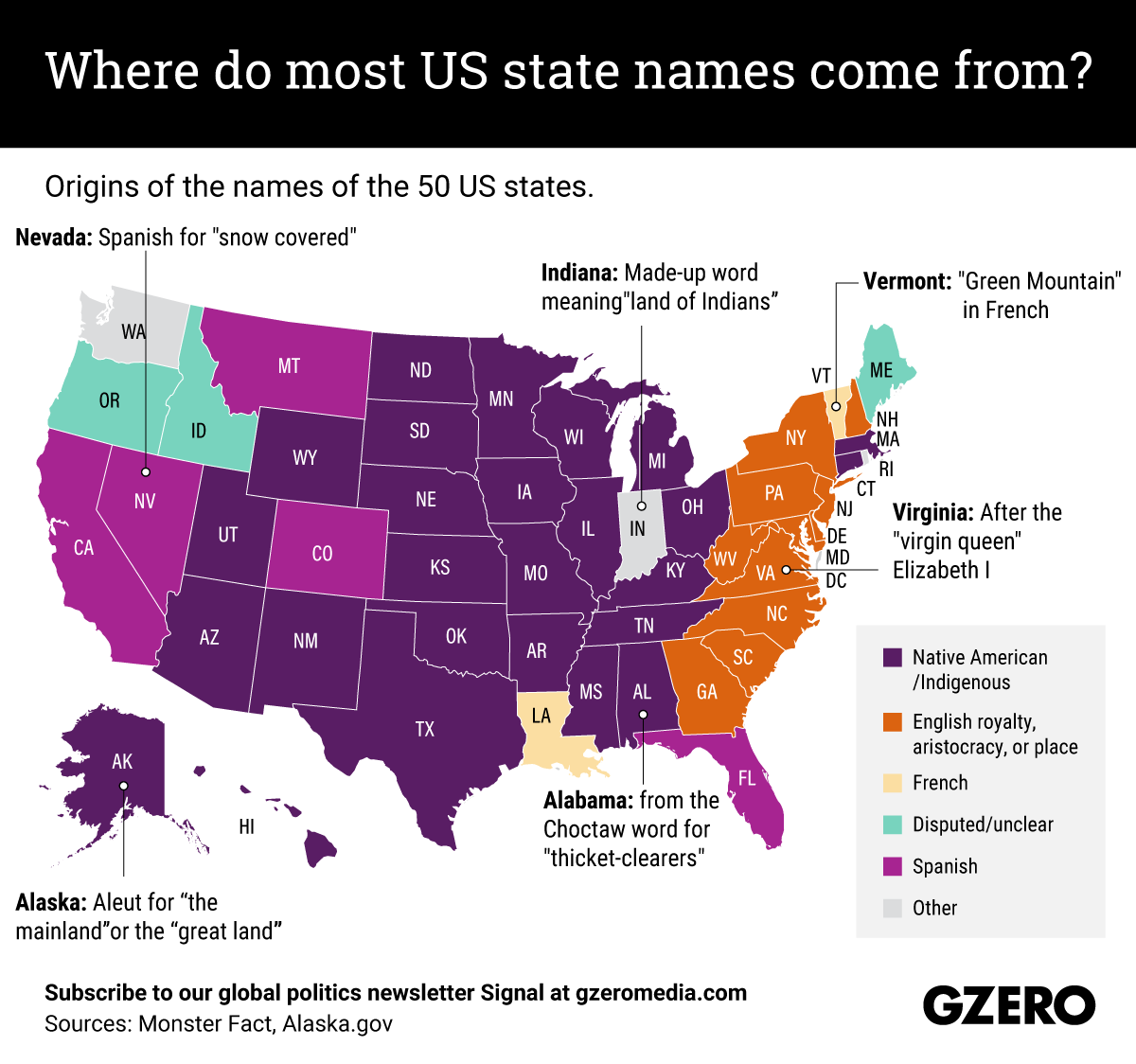November 24, 2020
One is "snow-covered." Another is named for the "virgin queen" of England. A third means "near the great-little mountain." Many of the names of US states come from Spanish, English, and French — the languages of the empires that colonized North America. But by far the greatest number derive from the languages of the Native American peoples who were displaced or killed as part of that sweep of history. Here's a look at where the names of the 50 US states come from.
CORRECTION: An earlier version of the graphic mistakenly identified Delaware as being a name of Native American/Indigenous origin. In fact, the state — like the river and bay — was named for the Baron of De La Warr, a British peerage title held by Thomas West, colonial governor of neighboring Virginia. History buffs will note that De La Warr is itself a title of French origin, but insofar as the state was named for a British lord, we have coded it as such.
More For You
Mastercard Economic Institute's Outlook 2026 explores the forces redefining global business. Tariffs, technology, and transformation define an adaptive economy for the year ahead. Expect moderate growth amid easing inflation, evolving fiscal policies, and rapid AI adoption, driving productivity. Digital transformation for SMEs and shifts in trade and consumer behavior will shape strategies worldwide. Stay ahead with insights to help navigate complexity and seize emerging opportunities. Learn more here.
Most Popular
Think you know what's going on around the world? Here's your chance to prove it.
Miami Mayor-elect Eileen Higgins points as she thanks her staff and supporters on the night of the general election, on Tuesday, Nov. 4, 2025.
Carl Juste/Miami Herald/TNS/ABACAPRESS.COM
A Democrat won Miami’s mayoral race for the first time in nearly 30 years. The Republican defeat will ring some alarms for the party – and their support among Latino voters.
Women work in the plastic container assembly area inside the El Oso shoe polish factory, located in Mexico City, Mexico, in its new facilities, after officers from the Secretariat of Citizen Security and staff from the Benito Juarez mayor's office arbitrarily and violently remove their supplies, raw materials, machinery, and work tools on January 17 of this year following a coordinated operation stemming from a private dispute. On August 27, 2025.
Photo by Gerardo Vieyra/NurPhoto
50: Mexico’s President Claudia Sheinbaum is taking a page out of US President Donald Trump’s book, implementing up to a 50% tariff on more than 1,400 products in a bid to boost domestic production.
© 2025 GZERO Media. All Rights Reserved | A Eurasia Group media company.
